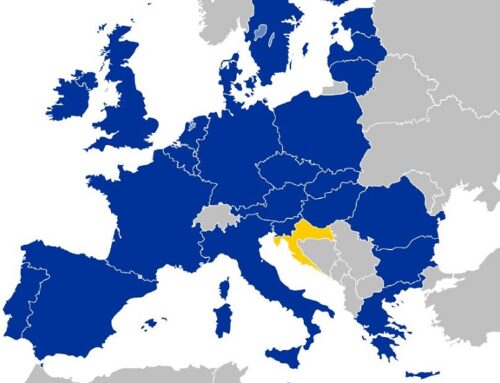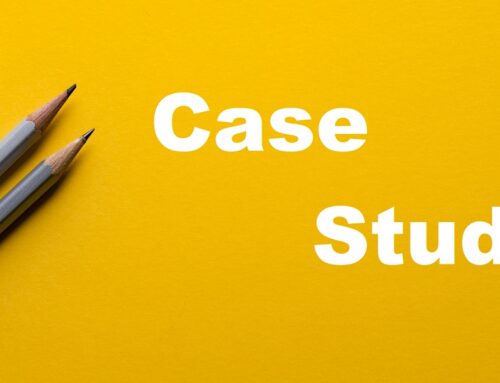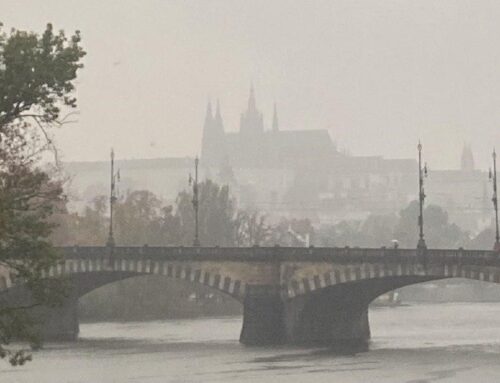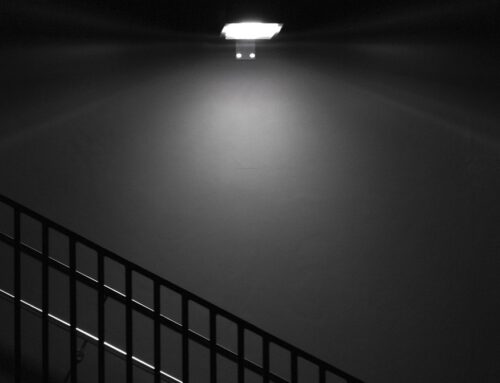In late September, the American Federal Government faced a dim perspective of shutting down. The House Speaker, McCarthy failed to deliver his promises to the House of Representatives Republicans. Bringing the budget to its pre-COVID days was at the crux of the issue. The American government shutdown comes with a lot of implications: military would not be paid, air travel could have been disrupted as already scarce Air Traffic Controllers would not see their paychecks either. To avoid this, the new spending bill was passed. However, it contained no aid to Ukraine.
Since the start of the full-scale invasion, U.S. aid to Ukraine has reached $68 billion. A small part of that money is still available: 1.6 billion USD at the Defense Department for weapon replacement and $5.4 billion at the Presidential Drawdown Authority. The Presidential Drawdown Authority allows the President, currently a Ukraine-cause-sympathising Joe Biden to use U.S. defence stocks for Ukraine, as the Ukraine Security Assistance Initiative currently stands fundless.[1]
The White House asked Congress for $37.5 billion and Secretaries Yellen, Austin, Blinken and Administrator Power sent a letter to back direct budget support for Ukraine . The current spending bill accounts for spending until mid-November. The aid could be included in the larger spending or separate bill. Democrats are adamant to stand with Ukraine. The Senate, mostly Democratic, has a consensus over the need to aid the Kyivan allies. However, the House of Representative, due to its Republican majority, seems to be a hindrance. The Republicans, having a majority, are capable of blocking legislation aimed at aiding Kyiv. For instance, the $300 million bill that was supposed to finance the training and equipment for the Ukrainian soldiers. Some argue that ousting of Speaker McCarthy was a result of his attempt to advance aid to Ukraine. Representative Gates even suggested a secretive deal between McCarthy and Biden over the matter.
The picture is not as black and what, or blue and red for that matter. Even within the Republican party itself there is a rift about the American foreign policy approach. The reluctance to aid Ukraine exemplifies a larger trend in American politics – a pool of voters, who see the American path forward as isolationist. The end of the Cold War, PTSD from the wars in the Middle East and growing inflation and debt all contributed to the desire of returning to the 1930s and Founding Fathers path. Trump’s presidency and his “America First’ philosophy highlighted this desire. A cohort of Americans see their country’s global involvement as a bad thing; American money should benefit American people.
Not everybody within the Republican party shares the sentiment. Most notably, Senator McConnel, who views the Ukraine war as an important political battle, on which he wants to build his legacy, as the retirement age nears. He is very vocal on his concern about the isolationist movement among Republicans.
Not all Republicans, opposing aid, side with isolationism. Donation fatigue is more apt to describe their attitude towards more aid. A stalemate with Russia is perceived as a losing war in light of American military experience in the twenty-first and twentieth centuries. Consequently, there is not much thrill for the aiding of war that is deemed to be a losing effort. General support abating after a year is to be expected. Donation fatigue is strong in Germany and Italy. Slovakia rejected the EU’s final military aid package. It is a common phenomenon. Optimism is scarce in Ukraine, too. The commander of Ukraine’s Armed Forces, General Valery Zaluzhny, told The Economist that the war had reached a stalemate, emphasising the importance of technological edge over the Russians for victory. Zelensky denied stalemate claims. However, in the West, there is quite a group of proponents of Kyiv making a deal with Moscow. This suggestion fails to account for quite an important nuance – Russia wants no deal. Putin stressed his confidence in achieving all of the desired goals as he listed Ukrainian losses, while omitting the Russian ones at the Valdai conference. He also repeated his infamous 2016 statement: ‘Russian borders have no limits.’ For Putin, the war is existential. For many Russians, Ukraine is not a sovereign state. Stent demonstrates Putin’s outlook from the talks to Stone and Bush: Russian and Ukranians are “close relatives”, “almost the same” and the sovereignty of the Ukrainian state is unnecessary.[2] These notions resonate with Russians. Making a deal with the Kremlin is encouraging Russia’s imperial strive, which spans beyond Ukraine. Lanozska skillfully highlights that Eastern Europe is a complex highly nuanced region with strong historical grievances. This leads to its oversimplification by foreign analysts and intellectuals, who often unknowingly or not validate Kremlin rhetoric.
In October 1999, the Russian government prepared a draft of the new military doctrine. The final, officially approved military doctrine debuted a month after Putin became the president, in April 2000, demonstrating a significantly more aggressive stance. The approved version omitted “the Russian Federation…will not be the first to launch an offensive against a country (group of countries or coalition) if it (its allies) is not subjected to an armed aggression” In, in hindsight of 2023, Russia secured itself a right to plan for a preemptive strike.[3] Other notable changes to the draft include: a more defined role and greater responsibility of the president in the overall development of the military organisation, more assertive and interventionist sentiment and an intention to restore militaristic patriotism as part of the upbringing (voenno-patrioticheskoe vospitanie).[4] Despite showing the break from the past “world war” Soviet doctrines, the official version boasts an aggressive and assertive character. The document abstains from a direct mention of NATO or the US, however, it emphasises the enhancement of the military and cooperation with Belarus, conveying the leadership’s concern of NATO’s policy towards Russia.[5] The Vysehrad countries joined NATO in March 2000, preceding the first draft, having no influence on the alterations of the provisions. The bombing of Belgrade, which undeniably has undermined the expected post-Cold War security framework and left the hopes for the NATO-Russia partnership abandoned, was happening between March and June 1999. While Primakov’s over the Atlantic U-turn has encapsulated Russian sense of humiliation after the neglect of the Russian opinion, it was the symptom, not the disease.[6]
In the 2014 military doctrine, the first identified threat to Russian security is global development with its rivalling values. Russia is rebelling against the global policeman and its values. Undoubtedly, American policing was flawed. But this should not take away from Putin’s declaration of the permanent break with the West and its values. Multipolar world order for Putin is not just about shifting geopolitical realities. It is also a civilisation matter. Putin first used the term Russky Mir (Russian world) in 2001, when conveying the pan-movement idea of the Russian world transcending borders and ethnicity.[7] The term has evolved into a slogan since 2006 and now represents a fresh geopolitical and ideological doctrine for the Kremlin, Eurasianism.[8] He sees the rules-based global world order as hypocritical and unfair, and while this might be true, the world order without rules will be anything but a source of justice.
February 2022 invasion brought about a more unstable world. International institutions, created for promotion and implementation of Western ideals became less relevant. Xi and Putin skipped the U.N. meeting, openly displaying disregard for Western norms as they hosted international outcasts – North Korea’s Kim Jon Un and Syria’s Bashar al-Assad. Russian propaganda makes a case for both regimes. The idea of human rights began to leave the foreign policy equation for a considerable number of leaders. Nagorno-Karabakh and Hamas-Israel wars are not accidental in their brutality and timing. This is exactly why making a deal with Russia and cutting aid to Ukraine is actually a costlier option for the West.
Ammunition and weapons sent to Ukraine are taken from the American stockpile. Replacement comes from new equipment made in the US. Accordingly, the White House posits that Biden’s latest request to aid Ukraine will lead to over $50 billion in US defence industrial base investment. By assisting Ukraine not only does the U.S. prevent a larger regional conflict and deter the potential aggressor and its ambitions that counter American interests but also strengthens its defence industrial base and creates jobs for American people. Checking Russia and showing the potency of American weapons also sends a signal to China, eyeing Taiwan. While providing aid for Ukraine comes with consequences, the consequences of not providing it will be far greater. Now is the moment for the West to overcome donation fatigue and commit more to the Ukrainian cause.
Sources:
Masha Gessen, “How the Kosovo Air War Foreshadowed the Crisis in Ukraine.” The New Yorker. February 15, 2022 – https://www.newyorker.com/news/our-columnists/how-the-kosovo-air-war-foreshadowed-the-crisis-in-ukraine
Angela Stent, Putin’s World: Russia Against the West and with the Rest, (New York & Boston: Twelve, 2019), 170.
Plokhy, Serhii. Lost Kingdom: The Quest for Empire and the Making of the Russian Nation. London: Penguin Press, 2017, 273.
S.J. Main, “Russia’s Military Doctrine,” Conflict Research Centre (OB77, April 2002).
https://www.reuters.com/world/whats-stake-us-congress-debate-over-ukraine-aid-2023-10-03/
https://www.fontanka.ru/2023/10/05/72779330/
https://www.themoscowtimes.com/2023/11/09/stalemate-in-ukraine-is-the-hesitant-wests-fault-a83049
https://edition.cnn.com/2023/11/08/opinions/ukraine-russia-stalemate-nato-mcglynn/index.html
https://www.theguardian.com/us-news/2023/oct/14/republican-house-ukraine-support-gaetz
https://www.cfr.org/excerpt-isolationism
https://www.washingtonpost.com/business/2023/09/24/government-shutdown-congress-budget/
https://www.ukrainianworldcongress.org/nearly-45-billion-for-ukraine-in-the-u-s-2023-budget/
https://home.treasury.gov/news/press-releases/jy1885
https://www.theguardian.com/world/2023/nov/01/italy-giorgia-meloni-prank-call-russia-ukraine-war
[1]https://www.reuters.com/world/whats-stake-us-congress-debate-over-ukraine-aid-2023-10-03/
[2] stent,170
[3]S.J. Main, “Russia’s Military Doctrine,” Conflict Research Centre (OB77, April 2002), 2.
[4]S.J. Main, “Russia’s Military Doctrine,” 4, 8. More assertive and interventionist assessment stems from the provision of the Armed Forces’ role “support where necessary for political acts of the Russian Federation by means of the implementation of corresponding measures of a military nature”.
[5] S.J. Main, “Russia’s Military Doctrine,” 8.
[6]Masha Gessen, “How the Kosovo Air War Foreshadowed the Crisis in Ukraine.” The New Yorker. February 15, 2022.
[7] Plohii 273
[8] Plohii 273.





